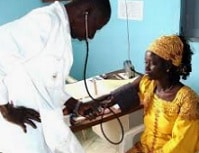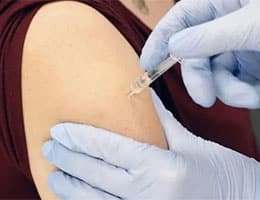 In the field of medicine , we speak of prevention to refer to the actions that are carried out with the aim of avoiding or reducing the impact of a disease . According to its characteristics, there are different types of prevention.
In the field of medicine , we speak of prevention to refer to the actions that are carried out with the aim of avoiding or reducing the impact of a disease . According to its characteristics, there are different types of prevention.
Primary prevention aims to prevent the acquisition of the disease . This instance, therefore, implies acting before the onset of the disorder.
It can be said that primary prevention seeks to prevent the person from getting sick . With this objective, doctors must develop certain strategies and actions.
Campaigns to encourage the use of condoms in sexual relations are an example of primary prevention. If a condom is used, the risk of contracting sexually transmitted diseases , such as AIDS or gonorrhea , is greatly reduced: it is estimated that the effectiveness of these products in preventing infections is around 98% . Thus, these campaigns help stop epidemics.
Through primary prevention, in short, the aim is to act on the risk factors or causal agents . These initiatives are aimed at healthy individuals.
In the very name of this concept we can notice the moment in which this type of prevention occurs and its importance for the health of the people who benefit from it: the adjective primary is defined as "fundamental" or "primordial", in a way that it is something that cannot be omitted to achieve the objective, an element without which another element that complements it could not exist. In this case, without this prevention the disease appears, which is why it is an essential barrier to staying healthy.
The causes of diseases, therefore, must be eliminated during primary prevention to minimize the incidence and prevent the population from becoming infected. This period prior to the action of the disease is known as prepathogenic ; It is the one that takes place before the stimuli that induce the etiological factors begin to act and cause the disease in question.
In this context we must mention the scientific discipline called epidemiology , which is part of the field of medicine and focuses on the study of the distribution, frequency and factors that determine diseases in each given human population. Through research, scientists aim to identify the determinants and decide how they will intervene to carry out prevention.
To reach the point where an etiologist considers that an intervention will be effective and possible to generalize, certain studies are needed to verify its effectiveness .
 One of the most common types of primary prevention intervention is health promotion , which consists of promoting the defense of the well-being of the population through actions that act directly on it. Some examples are awareness campaigns against tobacco consumption with a special focus on the prevention of lung cancer, among other diseases caused by this substance.
One of the most common types of primary prevention intervention is health promotion , which consists of promoting the defense of the well-being of the population through actions that act directly on it. Some examples are awareness campaigns against tobacco consumption with a special focus on the prevention of lung cancer, among other diseases caused by this substance.
Health protection is another strategy that focuses on the environment rather than people, with activities that promote and protect food hygiene and environmental health, for example.
As we said above, there are other levels of prevention beyond primary prevention. Secondary prevention has the purpose of achieving early detection of the disease and its immediate approach to make its development impossible or difficult.
After primary prevention and secondary prevention, tertiary prevention appears, associated with the treatment of the disease to achieve the rehabilitation of the subject. Finally, experts also refer to quaternary prevention , focused on relapses.
